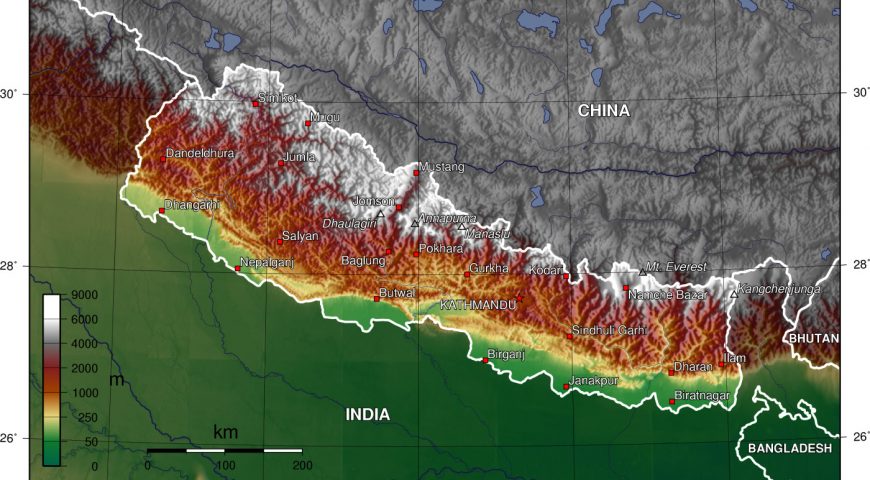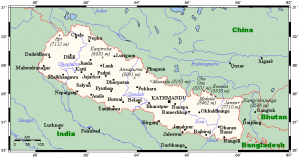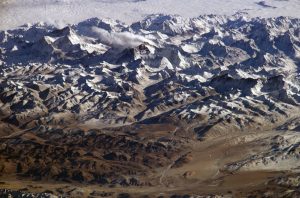
Geography of Nepal
Sandwiched between two Asian giants–China and India–Nepal traditionally has been characterized as “a yam caught between two rocks.” Noted for its majestic Himalayas, which in Sanskrit means the abode of snow, Nepal is very mountainous and hilly. Its shape is roughly rectangular, about 650 kilometers long and about 200 kilometers wide, and comprises a total of 147,181 square kilometers of land. It is slightly larger than Bangladesh or the state of Arkansas. Nepal is a landlocked country, surrounded by India on three sides and by China’s Xizang Autonomous Region (Tibet) to the north. It is separated from Bangladesh by an approximately fifteen kilometer -wide strip of India’s state of West Bengal, and from Bhutan by the eighty-eight-kilometer-wide Sikkim, also an Indian state. Such a confined geographical position is hardly enviable. Nepal is almost totally dependent on India for transit facilities and access to the sea–that is, the Bay of Bengal–even for most of the goods coming from China.

For a small country, Nepal has great physical diversity, ranging from the Tarai Plain–the northern rim of the Gangetic Plain situated at about 300 meters above sea level in the south–to the almost 8,800-meter-high Mount Everest, locally known as Sagarmatha (its Nepali name), in the north. From the lowland Tarai belt, landforms rise in successive hill and mountain ranges, including the stupendous rampart of the towering Himalayas, ultimately reaching the Tibetan Plateau beyond the Inner Himalayas. This rise in elevation is punctuated by valleys situated between mountain ranges. Within this maze of mountains, hills, ridges, and low valleys, elevational (altitudinal) changes resulted in ecological variations.

Nepal commonly is divided into three broad physiographic areas: the Mountain Region, the Hill Region, and the Tarai Region. All three parallel each other, from east to west, as continuous ecological belts, occasionally bisected by the country’s river systems. These ecological regions were divided by the government into development sectors within the framework of regional development planning.
